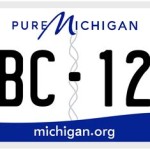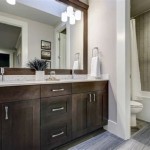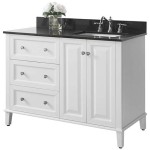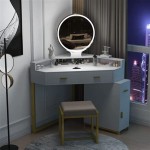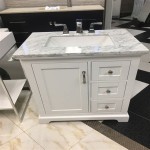30 Inch Bathroom Vanity Sets: A Practical Guide to Selection and Installation
The 30-inch bathroom vanity set represents a highly functional and versatile solution for a wide range of bathroom sizes and styles. Its compact footprint makes it ideal for smaller bathrooms, powder rooms, or even larger bathrooms where maximizing floor space is a priority. These sets typically include a vanity cabinet, a countertop, and a sink, offering a complete solution for both storage and washing needs. Understanding the various aspects of these vanity sets, from their different types and materials to installation considerations, is crucial for making an informed purchase and ensuring a successful bathroom renovation.
The popularity of 30-inch vanity sets stems from their ability to balance functionality with space efficiency. In many older homes, bathrooms are often smaller, making a standard-sized vanity impractical. A 30-inch unit provides sufficient storage for essential toiletries and personal care items without overwhelming the room. Even in larger bathrooms, opting for a smaller vanity allows for the incorporation of other desirable features, such as larger showers or freestanding tubs.
Furthermore, the availability of diverse styles and designs within the 30-inch category makes it easy to find a vanity set that complements any existing bathroom décor. From traditional to contemporary, rustic to minimalist, the options are virtually limitless. This adaptability, combined with the practical size, makes the 30-inch bathroom vanity set a consistently sought-after choice for homeowners and interior designers alike.
Types of 30-Inch Bathroom Vanity Sets
The first step in selecting a 30-inch bathroom vanity set involves understanding the different types available. These can be broadly categorized based on their mounting style, cabinet design, and overall aesthetic. Wall-mounted vanities, freestanding vanities, and corner vanities each offer unique benefits and suit different bathroom layouts and design preferences.
Wall-Mounted Vanities: These vanities are attached directly to the wall, leaving the floor beneath them exposed. This design creates a sense of spaciousness, making the bathroom appear larger. It also simplifies cleaning, as there are no legs or a cabinet base to work around. Wall-mounted vanities are available in various styles, from sleek and modern to more traditional designs with decorative molding. Installation requires ensuring adequate wall support to bear the weight of the vanity and its contents.
Freestanding Vanities: The most common type, freestanding vanities are typically supported by legs or a solid base. They offer ample storage space and are relatively easy to install, as they simply need to be connected to the plumbing. Freestanding vanities come in a wide range of styles, materials, and finishes, allowing for seamless integration into any bathroom design. Options range from classic shaker-style cabinets to contemporary designs with chrome hardware and minimalist lines.
Corner Vanities: Designed to fit snugly into a corner, these vanities are an excellent solution for maximizing space in small bathrooms. They utilize otherwise unused areas and provide a functional storage solution without taking up valuable floor space. Corner vanities are available in both freestanding and wall-mounted designs, offering versatility in terms of installation and aesthetic appeal. Their unique shape often requires careful planning during installation to ensure proper alignment with the plumbing.
Materials and Construction Considerations
The materials used in the construction of a 30-inch bathroom vanity set significantly impact its durability, appearance, and overall cost. The cabinet material, countertop material, and sink material all play a crucial role in determining the longevity and maintenance requirements of the vanity.
Cabinet Materials: Common cabinet materials include solid wood, plywood, MDF (Medium-Density Fiberboard), and particleboard. Solid wood is known for its durability and natural beauty, but it can be more expensive and susceptible to moisture damage. Plywood offers a good balance of strength and affordability, and it's more resistant to warping than solid wood. MDF is a cost-effective option that provides a smooth surface for painting or laminating, but it's less durable than solid wood or plywood. Particleboard is the least expensive option, but it's also the least durable and prone to water damage.
Countertop Materials: Countertops are available in a variety of materials, each with its own advantages and disadvantages. Common options include granite, marble, quartz, laminate, and solid surface. Granite and marble are natural stones that offer a luxurious look and excellent durability, but they require sealing to prevent staining. Quartz is a manufactured stone that is highly durable, stain-resistant, and requires minimal maintenance. Laminate is a budget-friendly option that comes in a wide range of colors and patterns, but it's less durable and can be susceptible to scratches. Solid surface materials, such as Corian, are non-porous and easy to clean, making them a practical choice for bathrooms.
Sink Materials: Bathroom sinks are typically made from porcelain, ceramic, glass, or stone. Porcelain and ceramic are durable, easy to clean, and relatively inexpensive. Glass sinks offer a unique and modern look, but they can be more delicate and require careful cleaning. Stone sinks, such as granite or marble, provide a luxurious and natural aesthetic, but they can be more expensive and require sealing to prevent staining.
When selecting materials, it's important to consider the overall style of the bathroom, the budget, and the level of maintenance required. Choosing high-quality materials can extend the lifespan of the vanity and ensure that it remains a beautiful and functional part of the bathroom for years to come.
Installation and Plumbing Considerations
Proper installation is essential for ensuring the functionality and longevity of a 30-inch bathroom vanity set. Before beginning the installation process, it's crucial to carefully plan the layout, gather the necessary tools and materials, and understand the plumbing requirements. Whether installing a new vanity or replacing an existing one, paying attention to detail during installation can prevent costly mistakes and ensure a professional-looking result.
Planning and Preparation: Before purchasing a vanity set, measure the available space in the bathroom to ensure that the 30-inch vanity will fit comfortably. Consider the location of the existing plumbing and whether any modifications will be necessary. Gather all the necessary tools, including a level, measuring tape, drill, screwdriver, wrench, and plumber's tape. Turn off the water supply to the bathroom before beginning any plumbing work.
Installation Steps: Begin by removing the old vanity, if applicable. Carefully disconnect the plumbing and remove the old vanity from the wall or floor. Clean the area where the new vanity will be installed. For wall-mounted vanities, locate the wall studs and mark the mounting points. Secure the vanity to the wall using appropriate screws or bolts. For freestanding vanities, ensure that the floor is level and adjust the legs if necessary. Connect the plumbing to the new sink, using plumber's tape to prevent leaks. Install the countertop and sink according to the manufacturer's instructions.
Plumbing Considerations: Ensure that the plumbing connections are compatible with the new vanity. You may need to adjust the drainpipe or water supply lines to fit the new sink. If you are not comfortable with plumbing work, it's best to hire a professional plumber to ensure that the installation is done correctly. Improper plumbing can lead to leaks, water damage, and other costly problems.
Post-Installation Checks: After installing the vanity, carefully inspect all the plumbing connections for leaks. Turn on the water supply and check for any drips or signs of water damage. Ensure that the sink drains properly and that there are no obstructions in the drainpipe. If you notice any problems, address them immediately to prevent further damage.
By carefully considering the types of vanity sets, the materials used in their construction, and the installation requirements, homeowners can make an informed decision when selecting a 30-inch bathroom vanity set. Proper planning, careful installation, and attention to detail will ensure that the new vanity is a beautiful and functional addition to the bathroom for years to come.

30 Bathroom Vanity Cabinet Set With Sink Combo Drawers And Open Shelves

Ravenna 30 Single Sink Small Bathroom Vanity Set 2 Drawers 1 Shelf E Homebeyond

30 Inch Bathroom Vanity With Sink Solid Wood Cabinet One Drawer And 2 Doors Multifunctional Storage Organizers Undermount Ceramic Natural Wal Com

Vanity Art Va3230w 30 Inch Single Sink Bathroom Set With White Stone Top Ceramic Soft Closing

Magic Home 30 In Modern Freestanding Bathroom Vanity Storage Blue Solid Wood Cabinet Combo Set With White Sink 3 Drawers Slx H Lab3621r1 The

30 Inch Antique Style Old Timer Classic White Ellenton Bathroom Sink Vanity

Ravenna 30 Single Sink Small Bathroom Vanity Set 2 Drawers 1 Shelf E Homebeyond

30 Inches Bathroom Vanity With Sink Combo Set And Soft Close Doors Modern Storage Cabinet Single 3 Sliding Drawers White

Bliss Bath Harmony 30 Inch Vanity At Emporium Toronto Ontario

30 Floating Bathroom Vanity With Sink Wood Cabinet Small Set White Green Gray And Blue Inch Etsy

